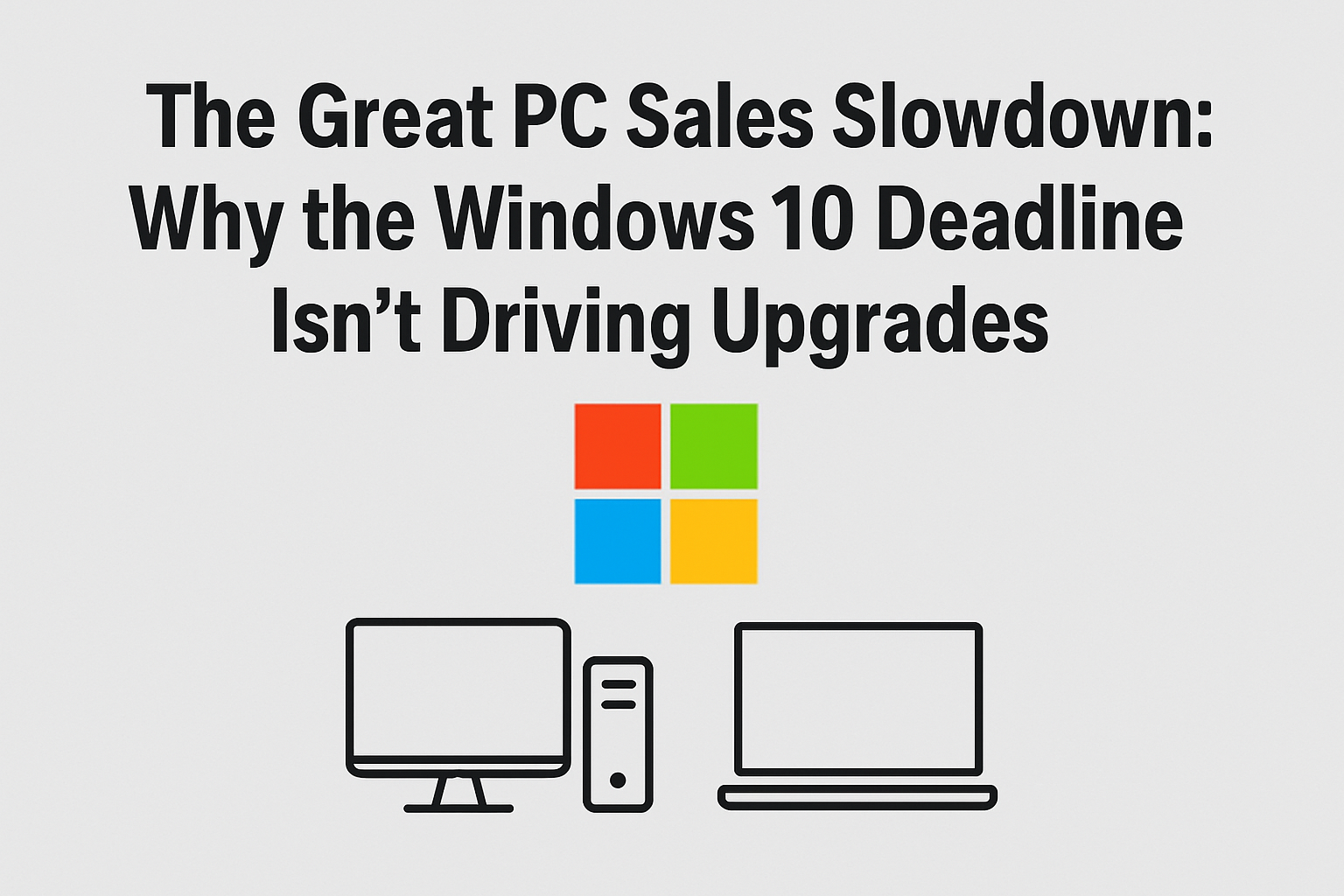Sales Slowdown

The Great PC Sales Slowdown: Why the Windows 10 Deadline Isn't Driving Upgrades
If you’ve used a Windows computer in the last year, you’ve likely seen the notification: a polite but persistent reminder that support for Windows 10 will end on October 14, 2025. After this date, the operating system that powers hundreds of millions of devices will no longer receive critical security updates.
Historically, this kind of deadline has been a massive catalyst for the PC industry. But this time, something different is happening. Despite the looming cutoff, the US market isn't seeing the expected surge in new PC purchases. What’s going on?
The Numbers Don't Lie: Stagnation in the Market
According to the latest report from research firm Canalys, the US PC market has barely flinched. Shipments in Q2 of 2024 actually fell by 1.4% year-over-year, stalling at 18.6 million units. This stagnation is a stark contrast to the past.
In 2019, the end of support for the beloved Windows 7 sparked a global PC buying frenzy, particularly among businesses. So why is the Windows 10 sunset failing to generate the same urgency?
Why Consumers Are Hitting the Snooze Button
Canalys analyst Greg Davis points to a simple, powerful reason: consumer mindset. Unlike businesses with IT departments planning upgrades years in advance, individual users are taking a wait-and-see approach.
"Consumers in the US are more willing to wait until their PCs need to be replaced due to greatly diminished performance or hardware failures," Davis notes. In essence, if the laptop they bought during the pandemic still turns on and opens a web browser, there’s little motivation to replace it.
This reluctance is compounded by two major factors:
1. The Economic Squeeze: "Between persistent inflation and weak job reports... more consumers are exhibiting cautious spending," Davis adds. In a climate of uncertainty, a new premium laptop falls far behind essentials like food and energy on the priority list.
2. The Windows 11 Hurdle: Microsoft is offering a free upgrade to Windows 11, but there's a catch: strict hardware requirements. Many perfectly functional Windows 10 PCs are not officially eligible for the upgrade because they lack a specific CPU or security chip (TPM 2.0). This creates a confusing barrier for users, who may feel stuck between buying a new device or continuing on with an unsupported old one.
The Silver Lining: The Commercial Market Holds Steady
It’s not all bad news for the industry. While consumer demand is flat, the commercial sector (businesses, governments, and schools) is picking up the slack. Canalys found the US commercial market grew by 4% year-over-year in Q2. This segment, which drove the Windows 7 upgrade cycle, is once again planning ahead and refreshing old hardware, helping to offset consumer hesitancy.
A Perfect Storm of Other Factors
The market is also navigating other unique currents. Earlier in the year, PC vendors rushed to ship inventory ahead of potential tariffs on Chinese imports. This created an artificial spike in Q1 shipments. Now, with the White House largely exempting PCs from those tariffs, companies are working through that built-up inventory, further muting new demand.